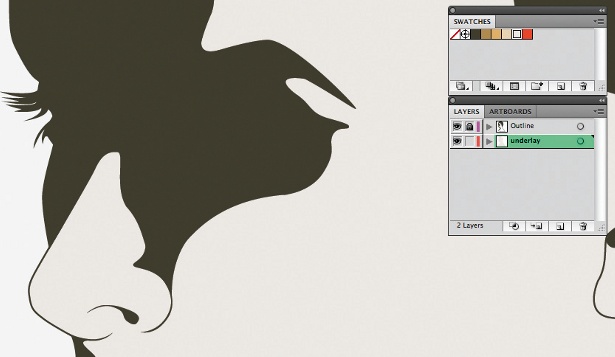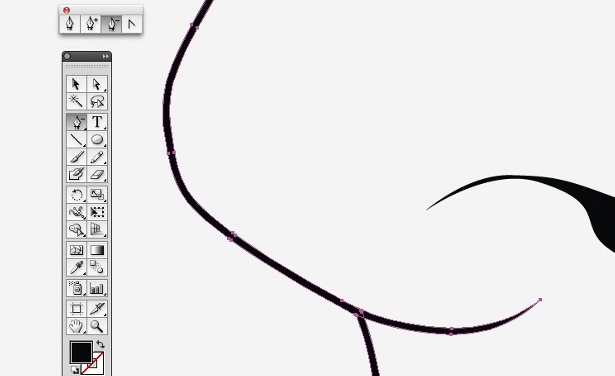Landor Associates: Strategic thinking
Landor Associates is one of the undisputed giants of strategic branding. The London studio opens its doors - read the interview and then watch our Studio Life documentary
Go behind the scenes at Landor London with our Studio Life documentary, at the foot of this article.
The legacy of strategic branding pioneer Walter Landor spreads both far and wide. With 21 offices in 17 countries around the world, Landor Associates is – by anyone’s standards – a global behemoth of the design industry, with a proud heritage that includes seminal rebrands such as Levi’s in the 1960s, Coca-Cola and WWF in the 80s, FedEx in the 90s and BP in the early 21st century.
The fact that many of the company’s archives are held in the world’s largest museum and research complex – the Smithsonian – says it all: as a man, and as the agency he left behind, Landor is an integral part of the history of branding itself. “Clients come with very high expectations, which is great as that challenges us,” admits Jane Geraghty, managing director of the London studio, which recently relocated into a large open-plan space overlooking the river Thames and Tower Bridge, heralded by an extensive self-initiated campaign to advertise the move.
“We do certainly draw from our past experiences, locally and globally, to inform our solutions,” she continues. “But the really exciting part is when we break new ground, as Walter did at the start. Our advantage at Landor is that while our experience reassures clients, the pioneering, innovative spirit that defines the agency gives us permission to devise new and exciting ideas.”

Asked to describe Landor’s approach to branding in a sentence, executive creative director (EMEA) Peter Knapp opts for “honest advocates of bravery”. It’s a dramatic, rousing call-to-arms, but then, in the cluttered, multiplatform modern marketplace, sometimes clients need to be told it straight.
Knapp’s own interest in design began with a “heady combination” – as he describes it – of Thunderbirds and LEGO: “I would watch these fantastic Gerry Anderson creations and then go and make my own in building blocks,” he recalls. “I love the challenge of translating an intellectual, strategic construct into a creative reality. The idea is king and it must sing and dance in a wide variety of circumstances and applications.”
Modern brands, Knapp believes, must be “fluid and plastic” across all the various channels: “The old concept of ‘frameworks’ is flawed in the current environment. We need to help tell adaptive stories, with a media-neutral strategy. Landor has both the courage and the honesty to tell clients uncomfortable truths about their businesses,” he says. Accordingly, any new project that the company takes on starts with a period of total immersion, in order to drill down to the essence of a client’s brand – in many ways, rather like the branding equivalent of method acting.
“Our staff often work in the offices of our clients to ensure that we really understand the culture and business,” explains Knapp, who reveals that this approach has largely developed in the past five years.

Landor’s 21 offices include the established global design hubs of New York, Paris, Tokyo and Sydney, but it also has bases in fast-rising economies such as Dubai, Mumbai, Jakarta and Mexico City. “We’re lucky enough to have 16 nationalities represented just in the London office,” reveals Geraghty. “We’re big believers in using our offices to help develop our talent on a global basis, which is helpful on international briefs.”
When required, the team draws on certain expertise from around the Landor network – the Cincinnati office, for instance, plays host to a very specialised director of colour role. “For those client relationships that span geographies, we also work hard to create one Landor team that might just happen to have its members sitting in multiple offices,” adds Geraghty. “If the end solution needs to be globally seamless, then the delivery of it should reflect that.”
As would be expected for an agency founded by the inventor of strategic branding, Landor places a lot of emphasis on the bigger picture. As a true full-service agency, it provides everything from naming and identity development through to packaging, interior design and beyond – not to mention a more holistic brand strategy through its ‘Brand Driver’ platform, which relies on exhaustive research to provide a birds-eye view of a brand and how it should develop.
This extends far beyond the visual identity and becomes about experience of the brand at every possible touchpoint. For example, a recent brief from Worthington’s tasked Landor with celebrating the character of the ale brand, not just from the brewers’ perspective, but everyone involved in the process – from the barley and hops farmers through to loyal drinkers themselves.

“We decided to promote the beer’s ‘grain-to-glass’ story as our core narrative concept. We did this on the larger formats of packaging,” explains creative director Ben Marshall, who worked on the project alongside senior designer Brett Stabler and client director Richard Taylor, as well as a number of junior designers, copywriters and production managers.
“The concept will be carried across all brand communication in-store, in pubs and across advertising,” adds Stabler. “We’ve achieved the objective to bring a brand with heritage into the 21st century and make it appealing to a new generation of ale drinkers.”
For Knapp, the ingredients of a great brand in 2011 go far beyond visual impact and consistency. “That has been superseded by the need for a brand to engage with its customers and staff,” he reflects. “To be perceived as authentic, a brand’s communications must be truthful and brave,” he adds.
Knapp uses this year’s multi-award-winning brand repositioning campaign for Old Spice – for which Landor teamed up with Wieden+Kennedy – as a strong example of working with a client who’s prepared to bite the bullet and take a completely different strategic direction.

“We work hard in the early stages to establish visual positioning and a visual footprint,” he explains. “But we also define a set of brand behaviours and personality traits, which enable the client to react. Our brand guidelines are a behavioural blueprint that creates liberty for a brand, not confinement.”
Of course, the majority of design studios aren’t blessed, as Landor is, with a dedicated strategic department to analyse, consider and contextualise every step of the creative process. So on a practical, day-to-day level, how do the design teams engage with the theoretical departments?
“In padded rooms with no sharp objects,” chuckles Knapp. “Our belief is that everyone here should be creative,” he adds, “and that’s what provides the linkage and common ground between the strategists and the design teams. This is a creatively democratic society. In the broadest terms, the brand idea is king and a creative idea or input can come from anybody. The trick is to spot the golden one when it surfaces.”
Studio Life is produced in association with Adobe.

Thank you for reading 5 articles this month* Join now for unlimited access
Enjoy your first month for just £1 / $1 / €1
*Read 5 free articles per month without a subscription

Join now for unlimited access
Try first month for just £1 / $1 / €1
Get the Creative Bloq Newsletter
Daily design news, reviews, how-tos and more, as picked by the editors.

The Creative Bloq team is made up of a group of art and design enthusiasts, and has changed and evolved since Creative Bloq began back in 2012. The current website team consists of eight full-time members of staff: Editor Georgia Coggan, Deputy Editor Rosie Hilder, Ecommerce Editor Beren Neale, Senior News Editor Daniel Piper, Editor, Digital Art and 3D Ian Dean, Tech Reviews Editor Erlingur Einarsson, Ecommerce Writer Beth Nicholls and Staff Writer Natalie Fear, as well as a roster of freelancers from around the world. The ImagineFX magazine team also pitch in, ensuring that content from leading digital art publication ImagineFX is represented on Creative Bloq.
